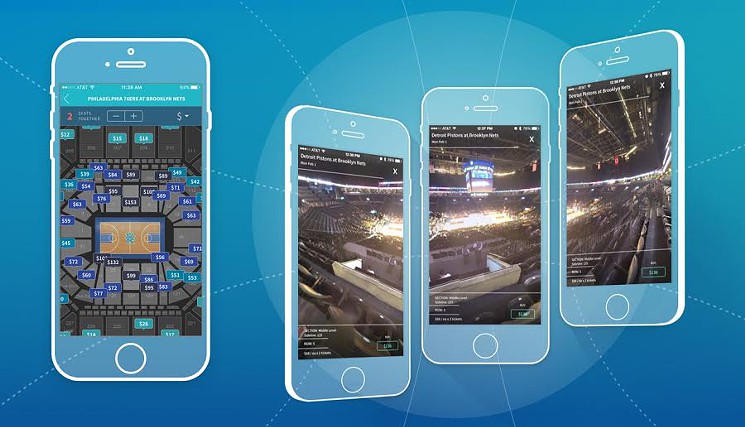New York-based startup Rukkus was early to the virtual reality game—and according to CEO Joe Messineo, the secondary ticket seller for entertainment and sporting events has already seen the technology boost profits. Messineo said the overall ticket market is a $30 billion business, but it’s a complex and fragmented space. Outside of Ticketmaster’s huge hold in the primary ticketing business, the secondary market has companies such as StubHub and TicketNetwork.
“There’s a lot of wiggle room in this space, where there are only three or four companies making above the $50 to $100 million mark,” Messineo told [a]listdaily. “We’re doing about $100 million this year, which is up from $20 million last year.”
In 2014, Rukkus launched with an iPhone app and then moved quickly to Web and Android. This past May, the company entered the virtual reality space. Messineo said the idea to explore VR came about when there were just a handful of employees (there are now over 23) talking about what was wrong with the current offerings in the secondary ticket market.

“Companies weren’t even showing an image of what your seat view looked like,” Messineo said. “StubHub provided a virtual rendering of what they thought the seat might look like. We thought 360-degree photography was advanced and no one was using it at the time.”
YouTube had just launched its 360-degree video channel, so Rukkus took that technology and integrated it with its iOS app. Customers can pan their phone around using the gyroscope and look any direction and see exactly what their seat looks like in 80-90 percent of pro sports arenas out there today. Over the next few months, Rukkus will have 100 percent of the arenas incorporated, as well as some concert-only venues.
“We had to create our own camera and software to get the images from each stadium,” Messineo said. “We had to build the custom camera rigs and the software, which took about a year. We started by capturing each section of an arena and we use tricky coding that is able to offset the images a little bit for each seat in that section, row by row. We’d move the rig around and capture the entire stadium.”
For now, only Apple users can view 360-degree seats on mobile devices, but Rukkus will be launching an Android version in the future. The technology also currently works on PC. “We’ve seen a big conversion rate lift on both iOS and PC since launching into VR,” Messineo said. “We’ve seen a couple million dollars of tickets sold through the VR platform in the first couple of weeks.”
Since venturing into VR, Rukkus has seen rival StubHub launch a VR app as well.
“We’re a tech company first,” Messineo said. “We don’t come from the same background as our competition. For us, it’s about creating a great product. A lot of companies have invested in VR, but we feel like we’re one of the first companies to use it for everyday use—not for video games or viewing entertainment, but for e-commerce.”
Messineo believes VR will open up e-commerce for big ticket items out of the gate. “You’re not going to buy expensive seats that are on the 50 yard line or behind home plate without being able to see that view,” Messineo said. “It makes a big difference when people can experience something first-hand. VR gives a brick and mortar feel with instant gratification. You can transform e-commerce if you do it right.”
Since it sells everything from sports to concert tickets, Rukkus works with a large demographic of consumers. Messineo said the overall platform is approximately 50/50 male to female, although certain sports skew higher and younger with males—just as certain concerts like Taylor Swift attract a younger female audience.
Rukkus doesn’t allow fans to resell their tickets. The company only works with ticket brokers, which Messineo said allows the company to sell tickets for less than the competition. “The exact same tickets are sometimes 30-40 percent cheaper than on StubHub or TicketMaster,” Messineo said. “We want to be fairly priced. And as a brand, we want people to see the difference in price and say ‘wow.’”

